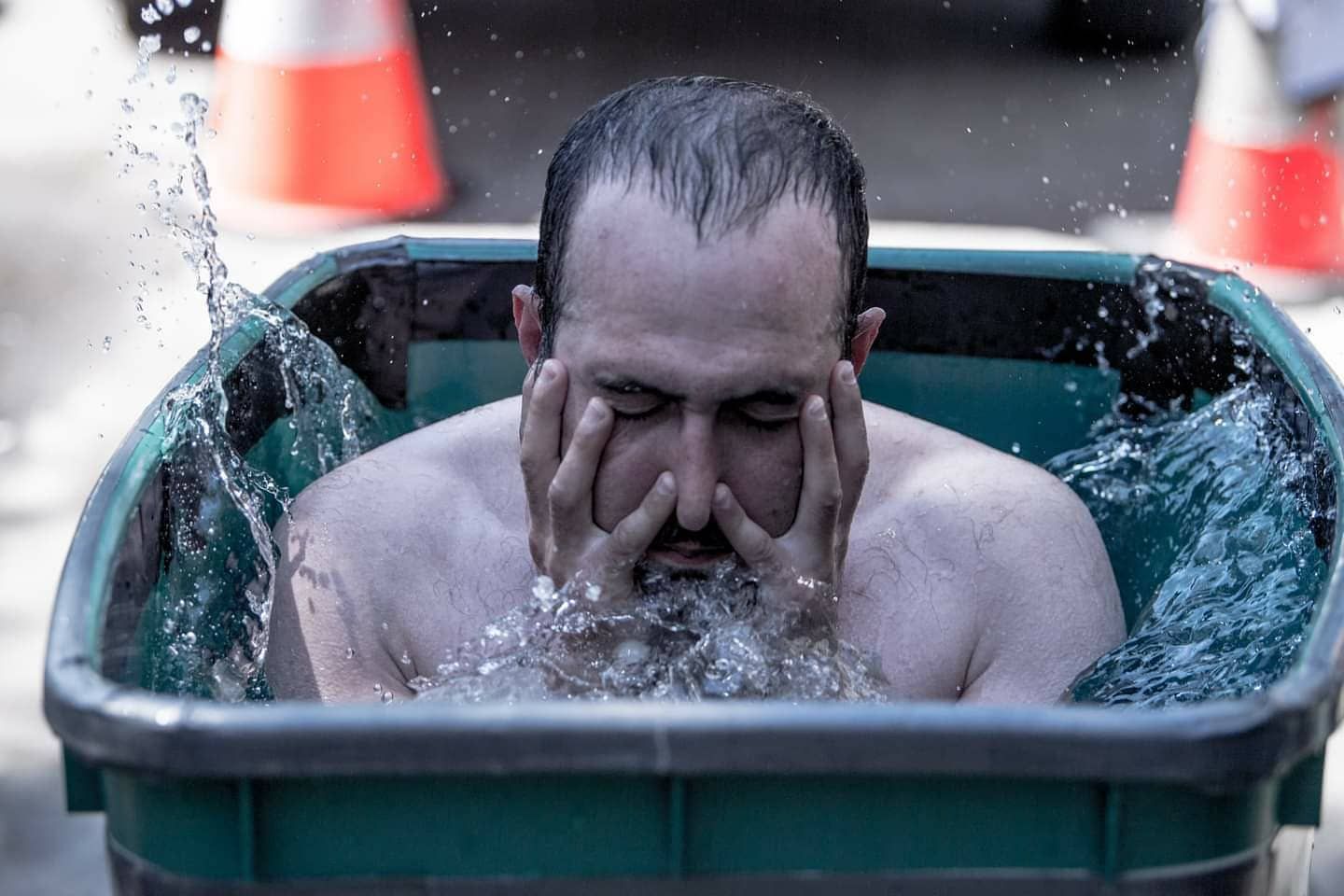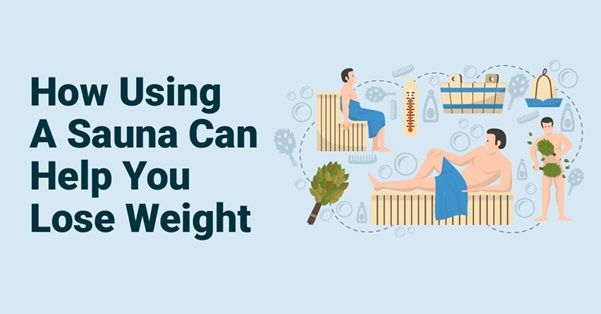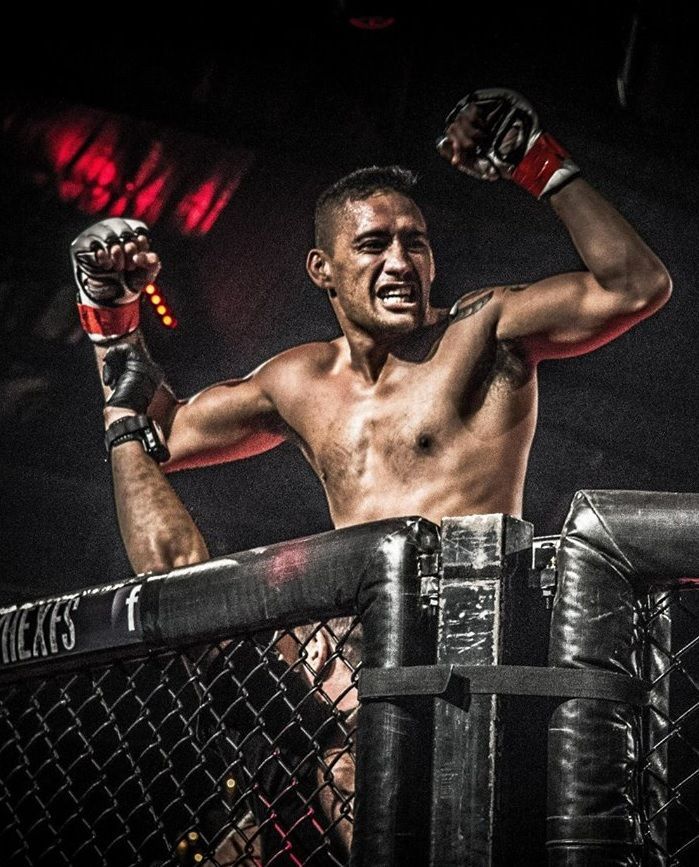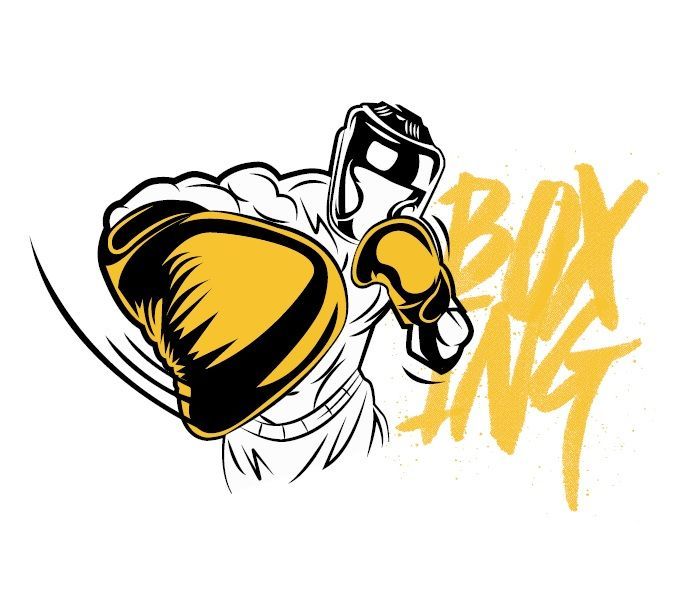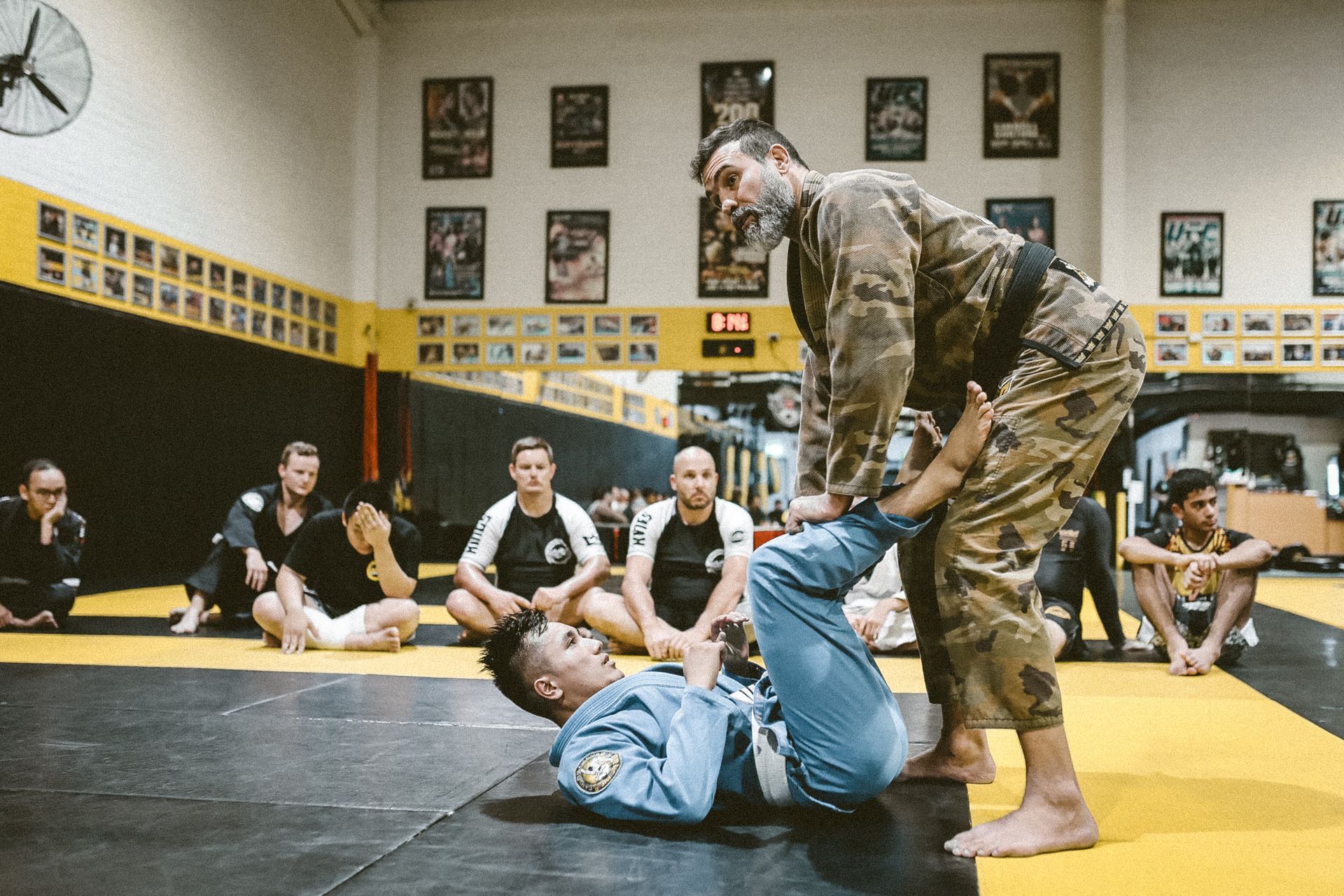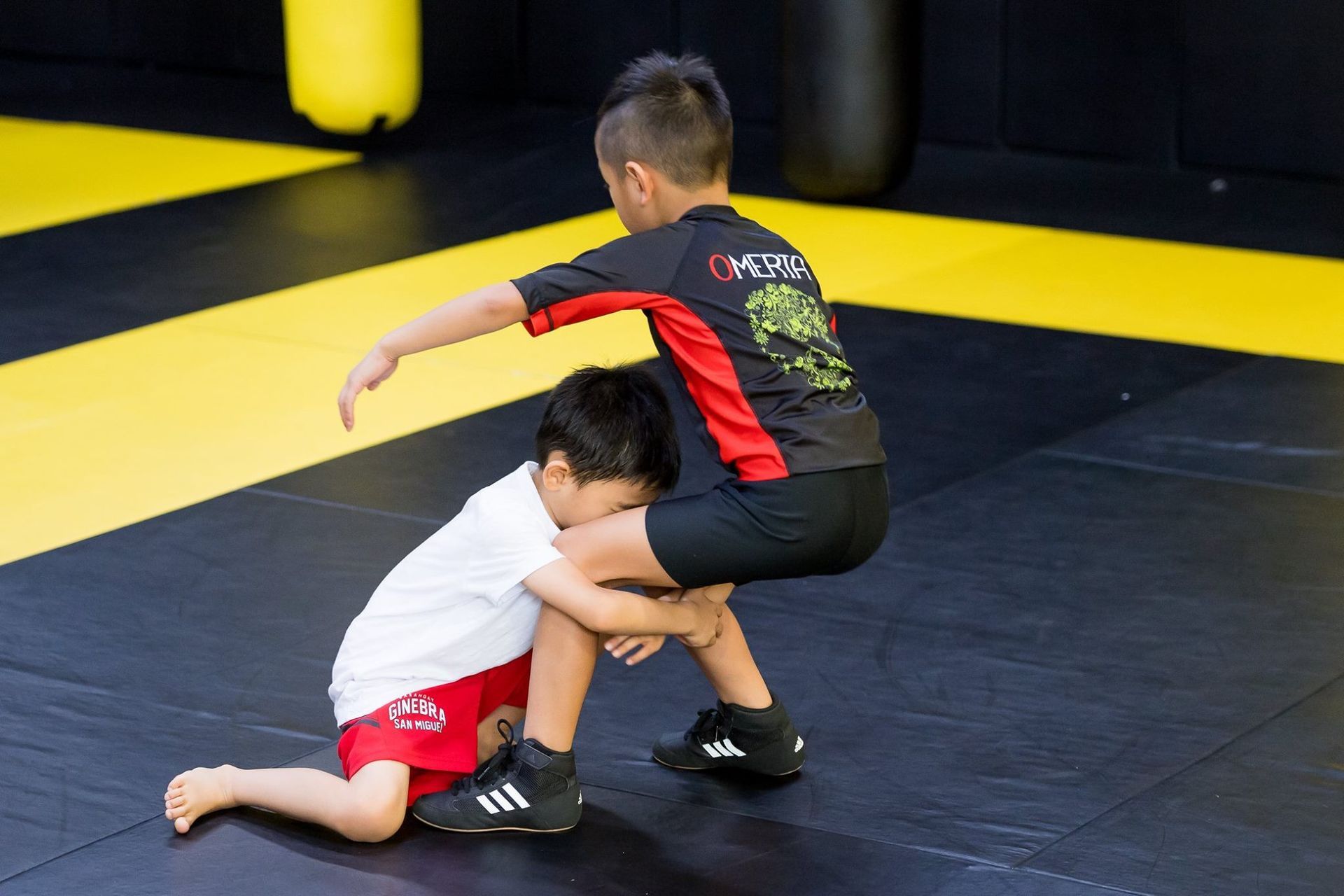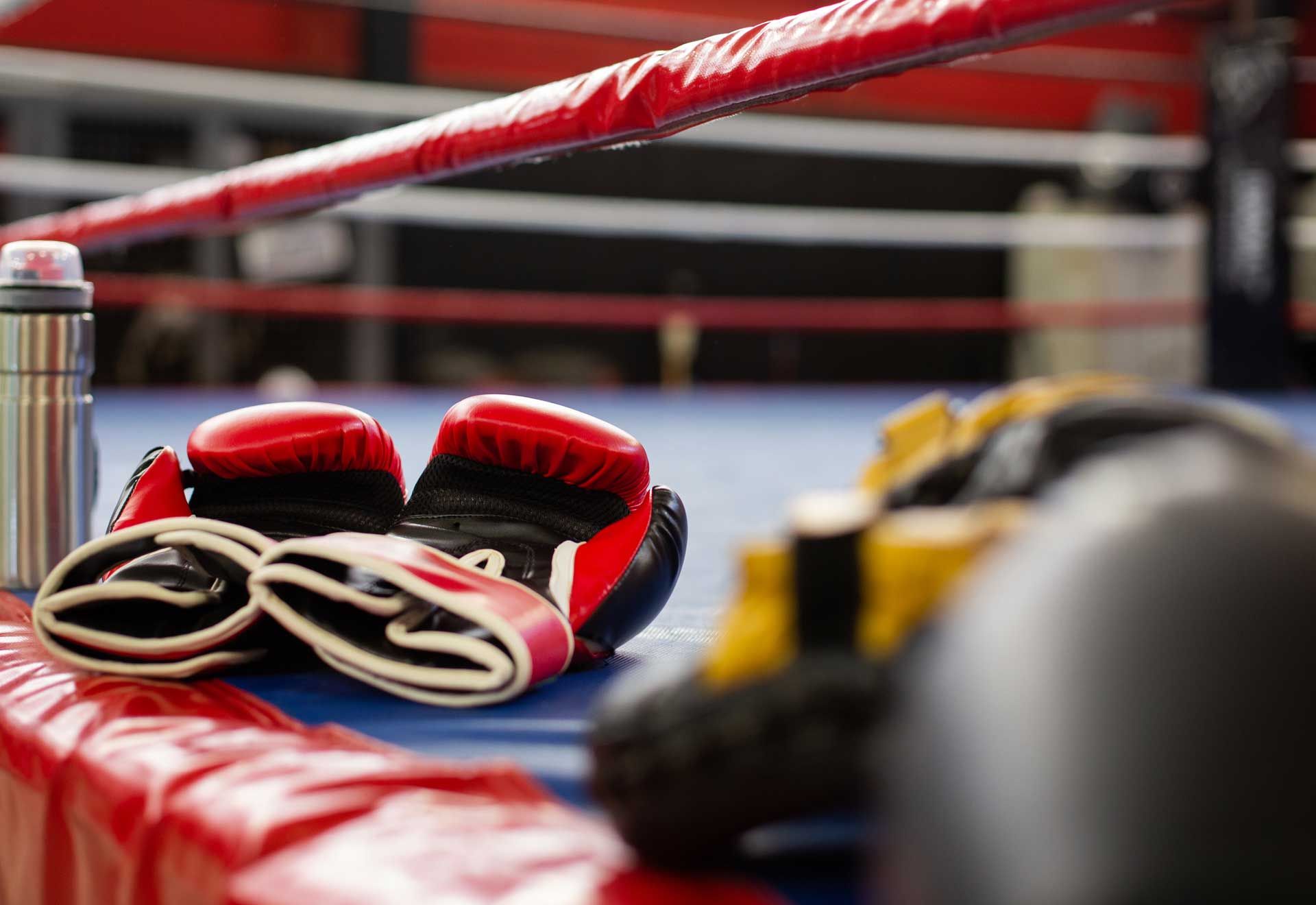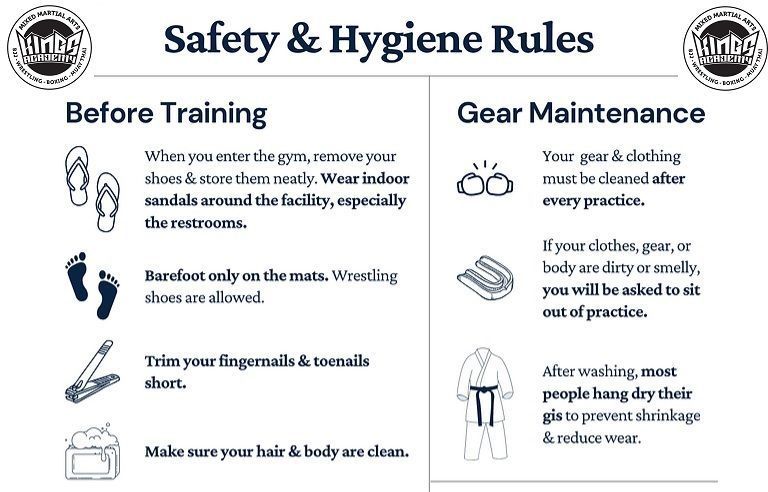Learn about Muay Thai
Muay Thai is a combat striking art that originated from Thailand. Muay Thai is widely considered to be the most effective striking martial art in the world.

Learn about Muay Thai
“One World – One Muaythai”
To find out about Muay Thai at Kings Academy click here: Muay Thai at Kings
A comprehensive look at Muay Thai history, training, and competition
Muay Thai is a combat sport, which is also be considered a martial art. Muay Thai is similiar to Kickboxing, often called Thai Boxing, but incoporating more skills. It is a striking art that originated from Thailand. Muay Thai is widely considered to be the most effective striking martial art in the world. It is known as the ‘art of eight limbs’, this refers to the body parts used whilst training in Muay Thai, the hands, elbows, knees and shins.
Muay Thai is great for self-defence due to its nature of teaching practitioners how to effectively use the body as both a defensive and offensive weapon. The word ‘Muay’ can be translated to ‘boxing/combat’, therefore also giving it the name ‘Thai boxing’. Nowadays, due to the rise of mixed martial arts (MMA), many MMA fighters choose to train in Muay Thai to help improve their stand-up skills for fights.
Governing Bodies
World Muay-Thai Council (WMC) - The WMC is the authoritative body for regulating professional Muaythai, both in Thailand and around the world. The Council has been charged with the responsibility for the expansion of Muay Thai worldwide. This involves supporting youth interest and athletes to learn the skills of Muay Thai and to assist in the pursuit of excellence in the art. Its overriding objective is to maintain and promote excellence in the art of Muay Thai – as a cultural art form, self-defence, fitness, competition or simply as a way of life.
International Federation of Muaythai Associations (IFMA) – The IFMA works with the WMC as the IOC recognised International Federation of Muaythai Associations which was set up to take Muay Thai to the Olympic mainstream. IFMA ensures that amateur Muaythai finds its rightful place in the world sporting community and allows the athletes to make a healthy transition from amateur to professional all the while being protected against all possible negative influences when it comes to making career choices. The WMC is also in full support of the IFMA Code of Ethics, its entourage and its Athletes’ Career Program.
The IFMA Muay Thai Constituation
Muaythai, also known as the science of eight limbs, is a unique combat sport and martial art form. Participation in Muaythai is a human right, IFMA’s Mission and Vision states, that everyone, who chooses to, must have the possibility of participation without discrimination of any kind, and in the spirit of solidarity all are welcome to practice and participate in any form or aspect of the sport.
Muaythai is an art form, which has existed for over 1000 years and is more than just a martial art. Its five main pillars – the fair play, excellence, respect, honor and tradition are not only the themes on which our Code of Ethics is based, but a way of life. Blending sport with cultural exchange and education is the platform of both Muaythai and the Olympic Movement
Let’s Start at the Very Beginning
“Everyone starts at the beginning of the road.” – Tayeb Salih
“The Journey of a thousand miles begins with a single step.” – Lao-Tzu
“The expert at anything was once a beginner.” – Helen Hayes
What is Muay Thai? (A Brief History)
Muaythai has been a part of Thai history and heritage for hundreds of years, as with most traditions from ancient times. Many different versions of the history of Muaythai exist, but all sources agree that Muaythai was the primary and most effective method of self defence used by Thai warriors on the battlefields of conflicts and wars that occurred countless times throughout the history of the nation now known as Thailand. During this time, a warfare manual named “Chupasart” was written. This manual emphasised the martial uses of each body part. The underlying philosophy of this manual implied that fighting was more than the use of weapons, but most importantly, should engage total commitment from mind, body and soul.
The first known practice of Muaythai as a “sport”, off and away from the heat and chaos of the battlefield occurred during the reign of King Prachao Sua (1697-1709 A.D.). With a great love of the combat art he often fought incognito in local village contests, often beating the local champions. When the nation was at peace, to keep the army busy he often ordered them to train in Muaythai. It was from this that loosely organised competitions started sprouting up around the country.
In 1774, the legendary Nai Khanom Dtom made Muaythai famous for his battle against a group of Burmese while he was a prisoner of war in Burma. He was captured when the Burmese ransacked and burnt Thailand’s ancient capital Ayuddhaya. He legendarily defeated ten of Burma’s best boxers when, without pause, he took them on one by one through a battering and bruising contest. He illustrated one of the most favourable elements in Muaythai, an indomitable will to win for honour and willingness to face any odds. This can be summarised as: “Nothing can stand against you except yourself”.
The army has fostered Muaythai. Soldiers have trained and used Muaythai techniques for as long as there has been an army in Thailand. For the military, it has always had use for the close combat fighting skills, the martial art of the battlefield. When a Thai soldier fights hand to hand he uses Muaythai. But then so does every Thai person, male or female. Watching it, learning it, and copying it is a part of Thai childhood. Muaythai soon became a favourite sporting pastime for people from all walks of life, with training camps being established all over the country.
In the early 1930s, Muaythai was officially codified, with rules and regulations being created and introduced into the sporting world, to make Muaythai an international sport of the early 20th century and a safe ring sport. Round contests were introduced along with eight divisions based on international boxing. Queensbury rules boxing gloves replaced the rope bindings on the fighters’ hands.
With a century’s long history, Muaythai has progressed and is now recognised in many countries worldwide, creating a new era of a proud world history. In recent years Muaythai, both amateur and professional, has swept across the world like wildfire and developed into a premier ring sport – a fighting art with no equal in terms of unarmed combat and spectator appeal, as well as being a form of self-defence and a fitness programme.
The Wai Khru
Origins and Explanation of the Ritual – Wai Khru Ram Muay
Wai is an action of Thais to show respect to others by putting the hands together like in prayer. Khru means teacher. Ram means dance in the old Thai traditional style. Muay means boxing.
The fighter performs the Wai Khru by circling the ring three times before kneeling and bowing three times as a sign of respect to God and man. He also bows to Buddha (traditionally) to ask for protection for himself and his opponent and for an honourable fight.
In Muaythai competitions, the art of the Wai Khru ritual a basic one. It is conducted to pay respect to the instructors, the opponent, and the spectators. The effectiveness of the ceremony is to demonstrate the gentleness and graciousness in the controlling of the body and the mind.
The fighter then performs the Ram Muay, whose simple movements demonstrate a fighter’s control and style. Each fighter performs the Ram Muay on each side of the ring to demonstrate his prowess to the audience. The Ram Muay is a personal ritual, ranging from the very complex to the very simple, and often contains clues about who trained the fighter and where the fighter is from.
The practitioner may wear a headband called a Mongkhon and armbands known as Pra Jiad and also an amulet during the ceremony, and the Ram Muay may be accompanied by music. The Mongkhon is unique to Thai boxing and not worn in Cambodia or Burma.
Is Muay Thai training for Everyone?
Just a few decades back, the only people training Muay Thai were competitors. Lean, mean, fighting machines, covered in tattoos. Or at least, that was what most people pictured in their heads when they thought of Muay Thai fighters.
With the rise of mixed martial arts (MMA), and also the middle class, the paradigm shifted. People started to discover the benefits and fun of training in Muay Thai and now Muay Thai gyms are now established all around the world.
So, yes, pretty much everyone. If you can see, stand, move your limbs, jump and run, you will do just fine. No special ability is required to train in the art of Muay Thai.
Is Muay Thai Dangerous?
This question gets asked a lot. As a full-contact competitive sport, Muay Thai is notorious for being one of the most violent. Fights play out like a game of survival and black eyes, broken noses, bloodied faces are all part and parcel of a fighter’s life.
These are, however, carried out under a controlled environment with referees to enforce rules and stop the fight when necessary. There are certainly health risks associated with a professional fight sport and to a lesser degree in amateur events, but rarely life-threatening.
A majority of modern Muay Thai practitioners do it purely for fun, fitness, health and social purposes. Even so, injuries do happen from time to time during training/sparring due to mistimed kicks, over-exertion, repeated impact and accidental contact.
But! These are usually mild and can be recovered from, usually in little time. To answer the question directly, yes, it is a little bit dangerous but isn’t it part of the allure of the sport? If it wasn’t just a little bit risky, would it really be an effective combat sport or martial art?
What are the Benefits of Muay Thai?
Let’s look at the benefits that you can gain with regular and consistent Muay Thai training.
Improves Fitness
This was the most obvious benefit you can gain. You can’t help getting fitter when training in a martial art as demanding as Muay Thai. Your stamina improves, you have a lot more energy to carry yourself throughout your day. You will get more muscular (tone up) from the additional strength and conditioning training. You’ll get fitter, stronger, faster, and healthier with regular hard training.
Stress Relief
Muay Thai training can be a de facto stress management system. There are days when you feel down and the first thing that comes to mind is always “Muay Thai”. Everything about training makes your heart smile: from the kind instructors to your awesome gym mates, the scent of your gym, to the grunts and heavy hitting sounds that fill the gym. It’s all part of the culture and friendships developed so that you look forward to coming every time.
But nothing works as well as getting completely exhausted from training to fill your entire being with a sense of joy and accomplishment. A thorough workout such as Muay Thai never fails to send a rush of endorphins that keeps you feeling relaxed after a great session.
The improved quality of your sleep from working out hard also helps to keep your energy up throughout the day. You can’t help crashing out after a good hard Muay Thai training session. So not only does it make you look good, Muay Thai makes you feel good too!
It’s great for Self Defence
Muay Thai is one of the most effective martial arts systems for self-defence. It is a striking art with roots in unarmed combat created for military use on the battlegrounds. The techniques were designed to inflict pain to the enemy and for self-defence. They are practical, easy to learn, and effective having been tested in centuries of battles.
Check out our Blog on why Muay Thai is great for Self Defence:
https://www.kingsacademy.com.au/why-muay-thai-is-great-for-self-defence
Builds Mental Strength
Muay Thai training is tough and will push you to your limits. You can either give up in the midst of training or you can stretch yourself and summon every last ounce of energy you have to push till the end. And the latter, is how training Muay Thai builds mental strength with some push from your trainer and partners.
Session after session, day after day, you just keep raising the bar for yourself. This continual process helps you to develop more focus and grit that translated to improved productivity in work and life.
This newfound resilience will make you wish you had started training Muay Thai at a younger age. Better late than never. Get started while you still can!
Widens Social Circle
There is a strong sense of camaraderie at the Muay Thai gym which makes it one of the best places to make new friends.
You share a common interest, and you are all working towards a common goal of improving your fitness or Muay Thai skills. Once you start Muay Thai, you will gain friends of all ages and backgrounds, many of whom you can forge deep friendships with, due to your common love for Muay Thai. These friendships will also motivate you to turn up to training consistently because you won’t want to let your friends and training partners down by not showing up.
Preparing for Your First Lesson(s)
“If we wait til we are ready, we’ll be waiting for the rest of our lives.” – Lemony Snicket
There are two schools of thought when it comes to learning new things: You can either prepare for it or just dive in and let everything sort itself out. With Muay Thai, its’s best to go with the latter. Despite a severely poor state of fitness, just simply show up at each lesson, believing that the training will get you stronger. No need to “get fit” before you start because doing the training will get start to get you fit from the first day.
Can I train Muay Thai at Home?
Training on your own when you start out, is not the best decision to make. That’s not to say that it’s impossible to self-learn but without proper guidance, it is easy to pick up bad habits, poor form and incorrect techniques.
Having someone to correct your form during bag work or pad work is vital. Even a martial art genius like Bruce Lee started out training under Kung Fu masters. Having someone guide you while you are training is invaluable. Just small adjustments are needed. But every little bit counts and helps improve your skill step by step.
There are also other parts of training in a gym to consider. There is the social aspect, which can be a motivating factor in training. The power of the community can push us to train harder, reinforce the desire to practice and provide valuable support to newcomers. The community spirit and culture motivates you to be consistent and keep turning up. At home any distraction can pull you away from your training. There is also a proper learning environment with the right equipment.
Once you have been training for a while, you will be in a better position to consider training at home. With a heavy bag, a training partner to hold pads, and the drive to train on your own on a regular basis, this is a viable option. It’s a great way to supplement your training in the gym and make up extra sessions when you can’t get in. It would not be recommended for a beginner but once you have a some training behind you it’s another training tool to help you progress and reach your goals.
How to Find the Right Muay Thai Gym?
It all depends on what you are looking for and what your training goals are. People train Muay Thai for all sorts of reasons: fitness, self-defence, recreation, or to compete. Each of which requires an appropriate match to the right type of gym.
Choosing a gym also depends on your budget, and whether you need the add-ons like 5-star facilities, MMA classes, etc. that can end up costing a bit more. More and more Muay Thai gyms are diversifying and introducing other curriculum like BJJ to keep up with the times so if you are into MMA, there is no lack of gyms to choose from.
If you know anyone who trains Muay Thai, you can ask them about their gyms and what they enjoy about their training before making any decision. But here’s the thing: almost everybody rates his/her own gym highly! Why else would they choose it in the first place?
Most people would have done their fair share of researching to find the best gym possible so based on that, you can narrow down your selection choices.
You can then check out review sites (like Google, Facebook, etc), and Muay Thai forums for more opinions on the gyms. After reading a bunch of reviews, you should do a background check (i.e. Google) to see if the instructors and academy are legit.
If everything is looking good, call up for a trial session. Almost every reputable gym offers free or paid trial sessions and you should take advantage of this to check and compare a few gyms. But if the first gym that you go to hits you in the right way, that’s great too!
Some gyms are going to require you to sign for a full year’s worth of membership, while many others do a monthly subscription. If you are more comfortable with monthly fees even if it works out to be more than an annual fee, just go with whatever suits your financial profile.
Here’s a cheat sheet on the things to look out for before signing up:
Quality instructors: Motivational, a passion for teaching, solid fight experience, pad-holding skills. These are the qualities of a good trainer. Even with the best facility in the world, an unenthusiastic trainer is a deal-breaker.
Well-maintained facilities: A poorly maintained gym with tired equipment can be a potential hazard. For example, holes in the floor mats can lead to ankle or toe sprains. Torn leather on the heavy bags can also cause cuts. Look out for these signs of danger.
Hygiene: Cleanliness is an important factor because scrapes from training are open invitations to nasty bacteria in the sweaty gym environment. A clean environment is a healthy environment.
Convenient Class timings: Schedule is important because you can’t attend a class if the gym is closed during your free hours! Ask to see their timetable. Most good gyms will have daytime and evening classes (some may even have early morning sessions). Find the one that has the best timetable to suit your schedule.
Location: If your nearest fight gym is a 2-hour drive away, then there really isn’t a lot of options for you. If you live in a big city, there will be a good number of fight gyms so take this into consideration. The more accessible it is, the less reason you have to skip training. Finding a gym close to home/work is great but also keep in mind a close gym that doesn’t inspire you won’t keep you coming in for very long.
Culture: This is the atmosphere in the gym. The culture is determined by how the coaches interact with the students and how the students interact with each other. You want a good culture that inspires you to want to train. The sessions should be enjoyable, and everyone should be willing to help each other. There is nothing wrong with a competitive training environment if it’s still built about learning, sharing and improving together.
Basic principles and techniques of Muay Thai
Muay Thai was originally developed from war. The Thai people needed to be able to train their minds and bodies. Being able to master both elements will provide you with supreme confidence in whatever you do!
Self-discipline is also important in Muay Thai. It can be gruelling to regularly train in Muay Thai due to the intensity of training, so you must be committed to the art to really see improvements in your game.
There are many techniques in Muay Thai. However, when first starting the most important will be basic moves such as footwork, then kicks and punches. Moves that include knees and elbows are more advanced, so this will come with time!
There are many different levels now when it comes to fighting, due to the damage that can be caused by both knees and elbows, many amateur bouts won’t allow the use of them. Not many Muay Gyms use a ranking system, practitioners usually like to see how they have progressed by sparring and competing against others. But now days many gyms now having a ranking system in place to help those progress who may never step into the ring to fight. Major Muay Thai governing bodies have basic structure for progression and many schools implement it. Such schools often replace the traditional coloured belts of the martial arts system with coloured Muay Thai shorts, T-shirts or Prajiads (Muay Thai armbands).
The two key elements in Muay Thai are striking and clinching. We will look at some of the basic techniques in more detail:
Striking:
Hand strikes - This includes different punches that are also used in boxing such as the jab, the straight punch (backhand), uppercuts and hooks. The hands are important in Muay Thai as they can set up bigger scoring shots such as the kicks but can also cause devastation!
Elbow strikes – These are techniques where the point of the elbow or blade of the forearm are used to strike the opponent. They are used in close range and generally used in conjunction with grappling. They can be more devastating than punches and less likely to injure the striker.
Leg strikes - These strikes include kicks such as roundhouse kicks and teeps (push kicks). Roundhouse kicks are one of the signature kicks in Muay Thai. Practitioners will constantly be drilling the roundhouse kick and in the process be conditioning their shins. Roundhouse kicks can be thrown to the leg, body and head (leg kicks may not sound that bad but they are one of the worst trust me!) Teeps on the other hand are used like a jab is for a punch. They push away opponents and can set up other strikes. However, teeps thrown with power can also cause some damage!
Knee strikes – These techniques are where the point of the knee is used to strike your opponent. Like elbows they are used close up and generally in conjunction with grappling. The front or sides of the knees can be used and applied from different angles. When used properly they can be very devastating.
Grappling:
Clinch techniques - The clinch is important in Muay Thai. This consists of being able to control your opponent using movement and being able to strike them efficiently at the same time. This can be tougher and takes a while to practise. Clinches are a very big part of Muay Thai fights and is what sets them apart from the likes of kickboxing bouts.
Sweeps - This is where you use movements that allow you to floor your opponent without using a strike. This includes unbalancing your opponents and using force to drive them to the floor. This is effectively used in clinching and when catching an opponent’s strike (roundhouse kicks and teeps especially). This does not count as a knockdown, but a sweep scores well in a fight as it shows control.
There are many variations of these basic strikes that you will learn with regular practice!
Difference between Muay Thai and Kickboxing
Many people mistake Muay Thai and Kickboxing for the same thing, this couldn’t be further from the truth! Muay Thai has been around for a much longer period of time and has gradually developed into a sport.
Kickboxing is much more recent and was influenced by other martial arts. In fact, Kickboxing was highly influenced by the likes of Muay Thai. The Japanese martial artists who regularly visited Thailand saw the potential in the art to be a sport. But they knew that changes needed to be made for it to become popular in the eyes of the public.
Muay Thai was first perceived to be a brutal sport, which put many people off it. Therefore, the Japanese removed strikes such as elbows and knees which can cause disastrous damage such as cuts which can be gruesome to look at!
They also included their own martial art, Karate with a mix of Muay Thai to make it more appealing and brought in more martial artists to compete in their sport.
Clinches are also not allowed in most Kickboxing bouts. The referee will usually separate the fighters immediately. Whereas in Muay Thai, clinching is a vital part of the sport! Strikes such as knees are very common in clinches as they can cause serious damage. From this position fighters can also sweep their opponent to score points in a Muay Thai bout.
Kickboxing has a higher focus on strikes thrown such as punches and kicks, whereas Muay Thai has an emphasis on grappling techniques too such as the clinch and sweeps (plus including extra strikes like knees and elbows).
Muay Thai fights are also usually fought at a higher pace with opponents constantly trying to counter each other (watching a live Muay Thai fight is really a great experience!). Kickboxing can be similar to a boxing pace where fighters can be more tactical.
Here we can clearly see that kickboxing and Muay Thai are very different! Kickboxing techniques can be used in Muay Thai bouts, but you will also need a solid clinch game, especially at the higher ranks. Many mixed martial artists do decide to fight in both Muay Thai and Kickboxing bouts to improve their overall mixed martial arts ability.
Muay Thai Rules
There are a lot to the rules for Muay Thai and it’s best to go right to the source if you’re interested in competing:
https://muaythai.sport/muaythai-rules/
How to Prepare for the First Muay Thai Lesson
After you sign up or even before you start your search for the right gym, you might consider some physical preparation.
Muay Thai is a highly intensive sport. No amount of pre-training is ever going to be enough because you will be performing completely foreign moves that utilize every inch of your muscles. These are muscles that have been largely neglected in the daily course of life.
The best thing to do is just show up!
The only preparation you really need is to be prepared to feel absolutely wasted at the end of every class for the first few weeks. Expect wobbly legs, sore knuckles, a few bruises, and muscle soreness after each lesson.
That said, the endorphin rush you get after each hard training session is amazing. No matter how you feel before you walk into training you’ll always feel great when you walk out.
Equipment needed when you first start Muay Thai
When starting Muay Thai people usually wear a t-shirt and shorts. This is ideal as you don’t want to be wearing heavy clothes as you will start to sweat once you get into the training session!
Shorts are also ideal as they will allow you to kick with ease and be able to practice your kicking technique, which is vital for Muay Thai. Most Muay Thai schools will have their own T shirts, Singlets and shorts to represent the club. Make sure you support your club and show respect by wearing their gear if provided.
It is also common for Muay Thai practitioners to wear Muay Thai shorts. These shorts are higher up than your average shorts and have been designed to allow people to complete kicking and knee techniques with ease. They also allow the practitioners to cool off faster.
Once you have attended regularly for a few sessions and adjusted to Muay Thai training, you will need equipment for sparring! Usually, you won’t need much to spar, just gloves, mouthguard and shin guards (a groin guard is also optional and recommended for men) and head gear is optional.
This will allow you to put what you have learnt to the test. There are different levels to sparring depending on what you want to get out of it.
For example, you may just want to spar for self-defence, therefore sparring may be lighter. But you may be training for a fight where sparring will be harder to emulate a real fight scenario. You can get these items online for a mix of prices, alternatively your gym may know where you can purchase them too. Most good gyms will adjust the level of contact and sparring based on the skill and experience of the individual. The goal of sparring is to get better, not to win! (We’ll discuss Sparring later in this article).
Muay Thai Training
“Don’t quit. Suffer now and live the rest of your life as a champion.” – Ali
“I fear not the man who has practiced 10,000 kicks once, but I fear the man who has practiced one kick 10,000 times.” – Bruce Lee
“Your mind will quit a thousand times before your body will. Feel the fear and do it anyway!” – Anonymous
Muay Thai is not easy. Most of the movements are simple but training will exhaust you thoroughly. There’s a saying, “anything easy is not worth doing”.
What is Muay Thai Training Like?
No kicking of banana trees, no punching blind-folded, no meditating under waterfalls. Basically, none of movie stuff you see in Jean-Claude Van Damme’s Kickboxer.
These days, Muay Thai gyms are run by trainers of every level and experience imaginable. Back in Thailand, however, the fight camp style of training is executed in a similar fashion across almost all camps founded on time-tested formulas.
For most beginner and intermediate levels, classes run between an hour to 2 hours. Each session begins with running and skipping as part of the warm-up routine, after which you will be asked to perform a myriad of skills.
You will learn to execute basic techniques involving punches, kicks, elbow and knee strikes, and various blocks. These can be performed in the form of shadow boxing, partner drills, bag work, and pad work.
There will also be various strengthening exercises involved such as push-ups, sit-ups, squats and any physical routine that your instructors are able to conjure. Basically, a watered-down version of pro training.
We are all born with different degree of athleticism, but training to the best of our abilities can help us achieve the best possible. Muay Thai training is a lot about conditioning and drilling. To get good at it, it’s all about the grind. Just show up and train.
What to Expect for the First Muay Thai Class?
It is not unusual to feel nervous when you go for your first formal Muay Thai training. Now, if you have concerns of being weak, out of shape, or clumsy, you might be a tad more nervous and it’s perfectly fine. The hardest part for most people, in general, is to actually sign up and start training. But once you get past this stage, and going for your first lesson, you have essentially overcome the greatest challenge.
You may quickly realize how uncoordinated your body movements are, when asked to execute certain basic moves. Everyone expects you to suck so you don’t have to be too hard on yourself. Your trainers will quickly take notice and should typically pay you more attention to correct your techniques, making sure you are taken care of. Just follow what is taught, then control your breathing and have a great time.
Any Beginner Training Tips?
Here are some top tips that you can apply easily that will surely enhance your early experience in Muay Thai:
Run, Forrest, Run!
Straight-up running has been the most effective exercise routine to improve overall performance. Running will power up your endurance and stamina, and you will see results within a short period of time. It will provide you with a base fitness that you can build on in your Muay Thai classes. Running is a great compliment to training if you have time or when you can’t make it to class.
The best routine is to incorporate both long-distance running with sprint interval training. A great tip is to go for running tracks as the impact on the knees is lower.
It’s A Wrap!
Always wrap your hands. Wrist injuries are common among Muay Thai and boxing beginners because the soft bones and tendons of the hands take time to be conditioned. Hand wraps are your first and most important line of defence against hand and wrist injuries so don’t skip out on it.
Form
IMO, this is the most important thing to take note of. Many people start out over-enthusiastically with their fists of fury and football kicks only to end up with injuries.
Instead, start with light punches/kicks especially on the heavy bag or pads, and then slowly build up speed and power.
It is often said that “Pain is the best teacher”, and that instant feedback you get with a poorly executed kick is the best lesson. But do it too frequently and you may damage yourself.
Don’t rush it. Once you make correct form a habit, power and speed will follow naturally. Build up gradually for long term success.
Drink Up!
The adult human body is around 50-65% water, and it needs fluid in order to function. Muay Thai training is a powerfully effective body dehydrator.
Dehydration can result in some nasty effects such as headaches, impaired brain function and reduced endurance. Researchers recommend drinking at least 2 litres of water per day. Bring a bottle of water when you train and hydrate adequately. Most gyms will also have a drink fridge with a variety of electrolyte drinks for training and protein drinks for recovery after class.
Privates – One on One Training
Get private lessons to make sure your techniques are correct. Realistically, it is difficult for the instructor to focus on every single person in a group setting. That extra attention with a 1-on-1 is an invaluable way to make sure you are doing everything correctly. Sure, it’s a bit more expensive but just a session or two can make a huge difference. Use them as required to improve your form for grading or to help prepare for an upcoming bout.
Seek Advice
Don’t be afraid to ask for help from your gym mates. There is a chance they’ve faced the same obstacle as you at some point in their training. Why not take advantage of their experience.
At the same time, unsolicited advice puts some people off so unless you ask, many people will just keep to themselves and watch you wince when you smash your shin bone against the heavy bag.
If you are experiencing pain from kicking, or having difficulty with the techniques, asking your gym mates or instructors will help you to overcome the challenges.
Rest, Rest, Rest
Get sufficient rest. Inadequate rest and overtraining can lead to more or severe injuries. If you have a bad shin bruise, skip the kicking to avoid incurring impact on it that can aggravate the injury.
Instead, you can focus on boxing and upper limb training while you heal. Adequate sleep is also vital for muscle recovery. In fact, muscles grow not when you train but rather, when you rest.
If you aren’t resting enough, it’s hard to get stronger. There is a Chinese saying, “to rest is to prepare for a longer journey ahead”. Listen to your body and take a break from training when it needs it.
Most good gyms will have some sort of recovery options for their students such as Saunas, Ice baths, Hyperbaric Oxygen, or even Yoga sessions to help with your recovery after training.
Is Muay Thai Sparring Dangerous?
Well, not dangerous in the sense that it’s life-threatening but accidents do happen. It is, after all, a full-contact sport.
The objective of sparring is to practise techniques, hone your reflexes and sharpen your instincts. So, it is usually performed at about 50% power or less and with protective gear including mouth guard, groin guard and shin guards.
The trainers are also there to facilitate the sparring sessions to correct your techniques and keep things in check before tempers flare and gets out of hand.
If the prospects of getting hurt or injured during sparring worries you, you really don’t have to spar at all. Sparring is a personal choice in most gyms and most definitely not included as part of a beginner’s curriculum. Most gyms won’t let spar until they feel you won’t hurt yourself or your training partners.
You should ideally be training for at least a few months before sparring. In many gyms, students are allowed to spar sometimes only after 3-6 months of basic training.
On this note, if the gym expects you to start sparring on your first lesson with full power, you should be a little wary. This is not the norm, and definitely not safe or helpful. Pack your gear and run!
To learn more about Sparring check out our Blogs:
Learn about Sparring: https://www.kingsacademy.com.au/learn-about-sparring
Don’t be afraid of Sparring: https://www.kingsacademy.com.au/don-t-be-afraid-of-sparring
Who are the top Muay Thai fighters of all time?
The GOAT (Greatest of all time) question. Every fight fan has his/her own favorite fighter and many are greats in their own right, so it would be impossible to list all the greats. But some fighters have been celebrated more than other fighters of their era. Here are my personal picks of the top Muay Thai fighters you should know:
Samart Payakaroon: Perhaps there is no better candidate than Samart for the honor of being Muay Thai’s GOAT. Many consider him to be the “Muhammad Ali” Thai equivalent. He is adept with every Muay Thai technique and truly a king of the sport.
At the peak of his fight career, he transitioned to boxing and won the WBC junior featherweight title in the process. Proving his unparalleled ability in both sports.
Somrak Khamsing: Somrak is Thailand’s first Olympic gold medalist and hence a beloved figure in the country. Mad boxing skills, out-of-this-world Muay Thai moves, elusive and seemingly invincible like Neo in The Matrix, or Bai Mei in Kill Bill. Check out his fight videos and it becomes apparent why he is one of the top Muay Thai fighters of all time.
Petchboonchu FA Group: Muay Thai’s most decorated fighter in history with 14 belts of the highest level. Petchboonchu is the clincher par excellence and an aggressive knee fighter. Besides a set of iron lungs and indomitable will, he was a smart fighter who used the scoring system to his best advantage.
Saenchai: A living legend who continues to fight actively at the age of almost 40 and entertain fans around the world. Saenchai is the most technical fighter you will ever see. I would likened him to Bruce Lee, and the living embodiment of speed.
He may appear to be disadvantaged by his shorter stature but he makes up for it with gravity-defying moves and the most flexible kicks ever displayed in Muay Thai. Bar none, the most entertaining Muay Thai fighter to watch in the ring. If anyone in this era deserves the GOAT title, it would be Saenchai.
Buakaw Banchamek: The poster boy of Muay Thai. Buakaw is not necessarily the best Thai fighter but he’s certainly the reason millions of fans around the world started training in Muay Thai.
There is no doubt that he is the most well-known Muay Thai fighter of all time. He has built legion of fans around the world. His accomplishments certainly cemented his place in the sport’s hall of fame.
Conclusion
Whew! That’s a lot to take in. Hopefully you find the information here helpful and relevant to your experience. Have fun on your Muay Thai journey, train and have loads of fun.
Chok dee!
To find out about Muay Thai at Kings Academy click here: Muay Thai at Kings
If you enjoyed this article please check out our other related blogs:
Kings Academy is the Premier Martial Arts Academy servicing Liverpool and Greater Western Sydney with classes in BJJ (Brazilian Jiu Jitsu), Muay Thai, Boxing, Wrestling and MMA (Mixed Martial Arts).

